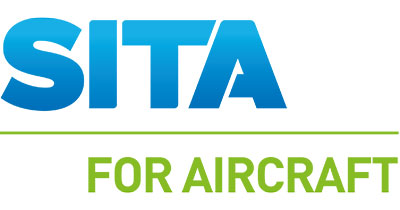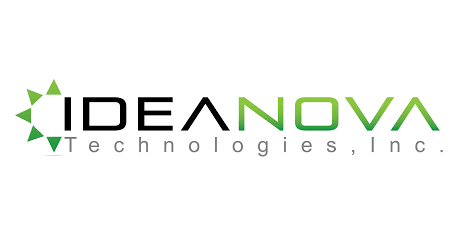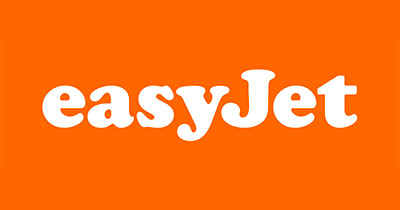Wednesday 9th December 2020
APEX Tech: An introduction to the APEX Technology Committee
Presenter


Michael Childers
chair, APEX Technology Committee, member of the APEX Board of Directors, and Chief Consultant, Content and Media Strategy
Lufthansa Systems
For three decades, the APEX Technology Committee has taken responsibility for identification, education, and codification of technologies impacting the passenger experience, with a particular body of work relating to content management and delivery.
In recent years, the APEX Technology Committee has established working relationships and/or formal liaison relationships with various entities including the Consumer Technology Association (CTA), the Society of Motion Picture and Television Engineers (SMPTE), MovieLabs (the research and development arm of the major motion picture studios), HDR10+, LLC, UHD Alliance, the Seamless Broadband Alliance, and others.
This report will identify the currently active Working Groups dealing with topics like High Dynamic Range (HDR) content delivery, access to Interoperable Master Format (IMF) mezzanines, moving inflight advertising into a digital ecosystem, deploying programmatic buying/selling of ads, adopting uniform language metadata descriptors, adopting Ad-ID and EIDR descriptors, and deploying new connectivity measurement. The active Working Groups will then offer separate individual reports.
APEX Tech: Measuring inflight connectivity from a passenger perspective
With the steady growth in demand for inflight connectivity and entertainment, airlines have difficulty in rating a vendor’s IFEC service provision and comparing one vendor’s service to another. This is predominantly caused by the lack of common metrics across the industry. The Connectivity Working Group (CWG) has addressed this challenge and has released a specification and guidance document that provides recommendations for measuring the passenger Quality of Experience (QoE) and bridging QoE to the Quality of Service (QoS) criteria for inflight connectivity and entertainment. These three sessions will address the background and recommendations of the CWG document:
Connectivity Session 1 – Introduction and overview of the Connectivity Working Group activities and findings


Stephan Schulte
Senior Manager Fleet Procurement, Commercial Fleet Management
Lufthansa


Rebecca Wetzel
Director of Marketing
NetForecast


Mary Rogozinski
Industry Consultant
IATA
Connectivity Session 2 – A look at the IFEC pre-connection experience


Laura Leonardis
Product Manager
SITA FOR AIRCRAFT
Connectivity Session 3 – A review of guidelines for monitoring and measuring the passenger experience once the passenger has connected to the inflight Wi-Fi service and how this information can be compared to the IFEC service provider’s measurements of Quality of Service (QoS)


Peter Sevcik
President
NetForecast
APEX Tech: A report on the activities of ARINC
Presenter


Peter Lemme
Blogger and Consultant
Satcom Guru
Aeronautical Radio, Incorporated (ARINC), established in 1929, was for many decades owned jointly by several airlines and other aviation-related companies. One of its founding purposes was to coordinate the development of “form, fit and function” standards (aka ARINC “Characteristics”) for avionics related systems and components. ARINC standards development is managed by the Airlines Electronic Engineering Committee (AEEC) organisation within ARINC.
Most IFE and Connectivity (IFEC) systems and components, including satellite-based connectivity systems, are designed and built to comply with ARINC standards.
In this session, airlines and staff that are contemplating adding passenger connectivity to their fleets, will learn about the various ARINC (AEEC) Characteristics (AKA “Standards”) that are used by connectivity suppliers on which to base their systems design. As satellite connectivity systems have evolved, new standards have been created in an effort to standardise systems aircraft installations, inter-system interfaces, and data protocols.
Airlines that are contemplating upgrading their existing systems will learn the current state of the ARINC standards, which standards are approaching the depreciation stage of life cycle, and which Characteristics are on the horizon.
In addition, in this session, an overview of interchangeability will be presented, focusing on antenna mounting and LRU size and basic interfaces.
Some of the connectivity-related ARINC Standards that will be looked at are:
- ARINC 741, the standard for a first-generation L-band satellite
- ARINC 761, the standard for a second-generation L-band satellite
- ARINC 781, the standard for a third-generation L-band satellite
- ARINC 791, the standard for Ka- and Ku-band satellite
- ARINC 792, the standard for a second-generation Ku-band and Ka-band satellite, and
- ARINC standards in development or on the horizon.
APEX Tech: The new APEX Specification for High Dynamic Range (HDR) content
Presenters


Philip Watson
Chief Systems Engineer
Panasonic Avionics


Juraj Siska
Founder & CEO
IdeaNova Technologies, Inc.

Andy Rosen
Media Consultant
Sequence Key


Michael Stattman
CEO
castLabs
In 2017, following two years of work by the Encoding and Encryption Technologies Working Group (EETWG), the APEX Technology Committee released APEX 0415, a content delivery specification that codifies the Common Media Application Format (CMAF) as the basis for encoding and encryption in the IFE content delivery supply chain.
The most important thing that APEX 0415 accomplished was to bring inflight entertainment into compliance with, and make it a part of, the broader content delivery ecosystem of the media and entertainment industry.
APEX 0415 was subsequently updated to address the increased security requirements of content providers as to High Definition (HD) content under 0415 Part 2. 0415 Part 3 addresses the encoding and encryption requirements of High Dynamic Range (HDR) content. HDR reproduces a greater range of luminosity and colours – blacker blacks, whiter whites, greater contrast, and millions of more colours. It is important in IFE because, unlike HD, HDR is discernible on small screens as well as large screens.
There will be four 10 to 15-minute sessions by Philip Watson, Panasonic Avionics; Juraj Siska, Ideanova; and Andy Rosen, Sequence Key:
HDR Session 1: An Overview of APEX0415v3, the High Dynamic Range (HDR) Update – Includes the requirement for HDR10, and the preference for HDR10+ or DolbyVision; the addition of an HDR10 1080p profile (8.5Mbps); an updated 4K HDR profile default from 20 to 18Mbps; the addition of a Section 9, Playback Device Requirements, with HDR details (Filmmaker Mode, Luminance, Color Gamut); the addition of Section 10.7. HDR Best Practices.
HDR Session 2: An Introduction to HDR – What is it? – Includes a description of HDR luminance – blacker blacks, whiter whites; one billion colours instead of 16 million; and more colours possible on the IFE display. Why should airlines and IFE companies be looking into employing HDR technology? What are some of the main benefits when compared to HD or even 4K video streams? What is the impact for operators supporting built in screens and passenger owned devices?
HDR Session 3: A comparison of HDR HD vs SDR 4K – Which provides the better display?
HDR Session 4: A Technical Overview of HDR and the New Specification – Includes an overview of metadata, HDR on PEDs, and the market share of DV and HDR10.
Viewers of these presentations will learn what HDR is all about and its importance in IFE in the future.
APEX Tech: How can IFE become a part of the digital, global, advertising ecosystem?
Presenter

Andy Rosen
Media Consultant
Sequence Key
A 15-minute overview of the work of the APEX Advertising Delivery Working Group (ADWG) by its chair, Andy Rosen.
The world of advertising has changed significantly as print publishing and network television have declined, and been replaced by digital platforms like the Internet. Major global advertisers are looking to replace lost print and broadcast advertising by advertising in the Digital-Out-of-Home (DOOH) and Digital Place-based Advertising (DPA) sectors. For inflight advertising to have a place in these new advertising markets, it is necessary that inflight advertising become a part of the emerging digital, global, cross-platform advertising ecosystem.
Consultant Andy Rosen has assembled a remarkable group of SMEs from the advertising industry to participate in his Working Group alongside experts from within our industry in the creation of an advertising delivery programme for inflight.
These efforts include the identification of the necessary technologies – the VAST template, the idioms of the i.a.b. Technology Lab, the open binding of SMPTE OBID, the use of Ad-ID and EIDR, and a reporting protection scheme that guarantees advertising agencies that reported impressions are real and qualify for the highest CPMs.
The majority of digital advertising is now sold via programmatic platforms – computer-to-computer buying – with supply-side (SSP) and demand-side (DSP) software. IFEC systems will require advertising placement and advertising decision servers.
The ultimate objective is to enable airlines to sell more of their advertising space, to target ads to specific passengers, and to increase advertising revenues.
APEX Tech: Language Metadata Tables (LMT)
Presenter


Yonah Levensen
Manager of Media Strategy and Taxonomy Governance,
WarnerMedia, and chair of the LMT Committee sponsored by MESA and SMPTE


Andy Beer
VP Technical Engineering
Spafax, and member of the APEX Technical Committee
IFE is a multi-language business, serving a global audience. In some cases, IFE content uses audio and subtitle language created for theatrical release, and in other cases, audio languages and subtitles are created especially for IFE. As the number of languages have increased, the current lack of uniform language descriptors is creating numerous and expensive errors. Delivery of the wrong language from post-production is the most common QC error that occurs today in the content delivery supply chain.
IFE is not the only market with these problems. Premium television providers looking at a global audience have faced the same issues with an even larger volume of languages and the need for localisation of these languages to an even more granular level than for IFE.
The Language Metadata Table (LMT) is a standard created to provide a unified source for language codes for use throughout the media and entertainment industries – including IFE. LMT’s Working Group mission is:
- To create a standardised table of language codes for implementation by entertainment and other industries using IETF BCP 47.
- To facilitate efficient and consistent LMT usage through best practices.
In May 2019, the APEX Technology Committee reached agreement with the LMT Working Group that APEX could use LMT for its content Delivery Supply Chain. Representatives from APEX, including Andy Beer of The Hub, and Technology Committee chair Michael Childers, have participated in the activities of the LMT Working Group.
In this session, the chair of the LMT Working Group introduces the IFE community to these new Language Metadata Tables and their potential implementation in IFE.
APEX Tech: The emerging Direct-to-Consumer (D2C) market and its impact on IFE


Michael Childers
chair, APEX Technology Committee, member of the APEX Board of Directors, and Chief Consultant, Content and Media Strategy
Lufthansa Systems
The motion picture distribution business has undergone a number of paradigm changes since its inception, all involving technology as well as business and distribution models. The first was the change from nickelodeons to theatres, resulting in the “Golden Age” of cinema; the next major change was the emergence of network television in the U.S. in 1948, followed by the closure of 19,000 theatres and the demise of the “B” movie; then in the 1970s Betamax brought on-demand viewing into the home.
The “fourth paradigm” of motion picture distribution is occurring currently – the emergence of the Direct-to-Consumer (D2C) market and the narrowing of theatrical exhibition. These things are resulting in a reprioritisation at the major studios that at least one says will prioritise the distribution of content for streaming and result in “distribution-agnostic” content creation.
At least one major studio has moved IFE and nontheatrical out of the theatrical department and into D2C, and two others have begun to integrate IFE into other business divisions, with some current IFE executives leaving those companies.
These changes will potentially change the business culture of IFE, as well as the content delivery supply chain. If D2C is built on an Internet delivery model, what changes will we see in IFE? If D2C is built on a subscription model, what changes will we see?
Is the future of IFE a clash between cached content and content delivered by connectivity, or will it be a migration path? What is the future of curated content in IFE? How will these changes impact the value proposition of CSPs, post-production facilities, etc.?
Industry messages of support

FTE APEX VIRTUAL EXPO 2021
Future Travel Experience (FTE) and the Airline Passenger Experience Association (APEX) will jointly host the industry trade show with the widest global attendance in 2021, FTE APEX Virtual Expo. Through a diverse exhibition showcasing the industry’s most forward thinking vendors and all-encompassing conference sessions, Virtual Expo will deliver a wealth of networking opportunities and inspiration across the most pertinent topics – from transforming the travel experience through digital health passports and automation at the airport, through to enhancing the onboard experience through inflight entertainment and connectivity, interiors, service and catering, hospitality and retail.











